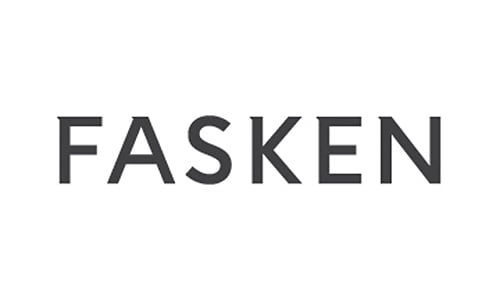How have trade secrets been defined in Canada?
According to the Canadian Intellectual Property Office, a trade secret is any business information that has commercial value and that is kept confidential. The Canadian Criminal Code provides a more elaborate definition where a trade secret is “any information that (a) is not generally known in the trade or business that uses or may use that information; (b) has economic value from not being generally known; and (c) is the subject of efforts that are reasonable under the circumstances to maintain its secrecy.”
In Quebec, the Civil Code does not offer an explicit definition of trade secrets. However, Quebec courts have stepped in to identify four characteristics of a trade secret: it is (a) information; (b) of commercial value; (c) that is not generally accessible; (c) and which is subject to measures undertaken by the owner to keep it secret.
Fundamentally, trade secrets are used for an innovation, invention or design which its owner does not wish to disclose to the public. Examples of trade secrets include technical information which might concern manufacturing processes, pharmaceutical test data, designs and drawings of computer programs, etc. Commercial information, such as lists of clients and suppliers, or advertising strategies, can also qualify as trade secrets. A variety of other information such as recipes, formulas and source codes have also been characterized as trade secrets. Famous examples of trade secrets include the Coca-ColaTM recipe, the Google SearchTM algorithm, the ListerineTM formula, and the New York Times’s system of establishing its best-sellers.
Recent Articles
Why would a company opt for trade secrets instead of or in addition to patents?
This question relates to choosing the appropriate type of protection for one’s intellectual property. When trying to figure out which protection is more adequate, innovators take into consideration many factors. One basic factor is the length of the protection offered. A patent, once granted, expires after 20 years of filing. It cannot be renewed. An innovator must file for a new patent, which may only be granted if that invention presents a sufficient level of improvement. This is not an easy feat to achieve, especially for an invention which was already covered by a previous patent. On the other hand, a trade secret is not subject to any formal examination of its utility, obviousness or novelty. As long as it remains secret and valuable to its holder, it enjoys indefinite protection.
Another factor to consider are the costs associated with patent protection. Securing patent protection requires substantial upfront costs such as legal fees for prosecution and patent office fees. Patents also require onerous maintenance fees throughout their existence. All of these costs must be multiplied by the number of jurisdictions in a patent’s application was filed. This is not the case for trade secrets: there is no such required administrative costs or registration fees and the scope of protection is potentially worldwide.
But undoubtedly the critical factor is the impact of public disclosure resulting from patent protection, and the possibility of reverse engineering the relevant technology. The need to control what information will be disclosed to the public may greatly influence a company’s decision to choose between trade secret or patent protection. If a competitor is able to obtain insights on a particular product just by studying that product, then there is nothing that can be done to prevent that competitor from using the information they gathered by legitimately studying the product. In that case, trade secret protection might not be sufficient nor make sense for the maker of this product. However, obtaining a patent over that same innovation will create a monopoly in exchange for the disclosure of that information to a patent office. So even if a competitor attempts (and succeeds) to reverse engineer a product, they may not be free to use that innovation because of the threat of a patent infringement claim from the patent owner.
Find out the five (5) types of intellectual property infrigement in Canada, read the details here.
Finally, even if no public authority imposes administrative costs or registration fees to secure trade secret protection, there are nonetheless costs associated with the measures needed to maintain the sacrosanct secrecy needed to protect a trade secret. The amount invested will depend on the measures implemented by the owner of the secret, which will be dictated namely by its size, the nature of its activities, and the way in which the trade secret is shared throughout the company.
How can we secure trade secrets in Canada?
It is important to reiterate that no single unified statute or legislation protects trade secrets in Canada. Businesses therefore must create and implement their own protective measures in order to maintain secrecy. Such protective measures should ideally include (1) internal measures and (2) rules on how to respond to cybersecurity breaches.
Internal measures include those that a company will integrate into its daily activities and usual processes. Notably, these include:
- Physical controls such as locked doors, security gates, and restricted areas that can be combined with electronic security measures such as keypads, passwords, encryption and firewalls.
- Keeping detailed records of the company’s intellectual property so that protective measures or corporate policies concerning these assets can be enforced.
- Implementing good practices related to storage and document management, and specific policies regarding electronic communications and social media usage.
Internal measures adopted by innovators will also include the management of employees’ rights and obligations. At a minimum, employees with access to trade secrets must:
- Enter into confidentiality agreements, nondisclosure, and non-competition clauses, as needed, and those must periodically be reviewed by the company. We also recommend executing exit agreements when employees leave the company.
- Receive regular training on how to handle trade secrets. Company policies do not always provide sufficient details on handling trade secrets, which is why employee training is a crucial complement. These training sessions can include reviews of what information within an organization is considered confidential, presentation of the best practices to protect confidential information and the behaviours to avoid. We also recommend sending periodic reminders of these principles by email to all employees.
With regards to our second category of protective measures, innovators are increasingly targeted by threats of all kinds that may lead to breaches. Businesses should anticipate potential risks in advance to better manage and even avoid security breaches. They should create a variety of response plans to mitigate any potential damage resulting from a security breach. If a breach has occurred, an investigation should be conducted to determine what happened, why it happened, who was involved and whether the breach was deliberate or due to a system deficiency. Based on the results of the investigation, corrective actions should be taken.
What actions or claims are available for a trade secret owner in Quebec and in other Canadian provinces?
Trade secrets can of course be enforced through judicial proceedings in cases of misappropriation, unauthorized disclosure or theft. Below is a list of potential claims available to trade secret owners:
In Quebec:
- Unauthorized disclosure of trade secrets under Article 1612 of the Civil Code of Quebec (“CCQ”). Article 1612 CCQ. stipulates that the owner of a trade secret can claim damages in the event of unauthorized disclosure of their secret, and claim damages equivalent at least to the developmental costs.
- Misuse of confidential information by an employee if this information was obtained in the performance or in the course of work under Article 2088 CCQ. This obligation, which continues for a reasonable time after the contract terminates, stems from the duty of good faith and loyalty that employees owe to employers;
- A general breach of contract claim under the CCQ. Such claim is available in two situations: (1) when a contract has an express clause protecting the confidentiality of a trade secret and (2) in instances where no express clause exists, provided that the nature of the contract, in conformity with the usage, equity or law allows for such clause to be implied.
- Availability of an injunction. In Quebec, an injunction for breach of any of the above obligations is a generally, and relatively easily, available remedy. This includes interim, interlocutory and permanent injunctions.
In common law provinces, generally:
- Breach of contract. A claim for breach of contract is available where a party is in breach of either express contractual terms, the relevant ones being restrictive covenants and confidentiality provisions, or of implied contractual terms such as the duty of fidelity and loyalty owed by an employee to an employer.
- Breach of confidence. A person who received a trade secret in confidence who improperly uses or discloses that trade secret would be in breach of their equitable obligation of confidentiality, which could be sanctioned through an action in breach of confidence. For the claim to be successful, the owner of the trade secret must demonstrate that the information is confidential, communicated in confidence and misused.
- Breach of fiduciary duty. When a company’s trade secrets are used or disclosed by that company’s officers, directors or high-ranking employees without authorization, a claim for breach of fiduciary duty is available.
- Unjust enrichment. This claim is available if the trade secrets holder establishes (1) an enrichment by the defendant, (2) a corresponding deprivation by the trade secret holder, and (3) that the benefit and corresponding detriment occurred without a juristic reason.
- Wrongful interference with contractual relations of others. This usually happens when a third party persists in attempting to collect confidential business information from an employee who works for a company that holds trade secrets, or, for example, an employee who owes a duty of confidentiality towards his or her employer. For the claim to succeed, the third party must have knowledge that the employee was in breach of his or her express or implied contract with the employer.
Criminal sanctions may also be imposed on those who engage in unauthorized use or disclosure of trade secrets. To communicate or make available a trade secret by deceit, falsehood or fraud constitutes a criminal offence in Canada.
Discover what qualifies as theft of intellectual property in Canada with this article.
What remedies are commonly awarded by Canadian courts?
The remedies that are most often awarded to trade secret owners in successful civil actions are damages and injunctive relief.
With regards to compensatory damages, in Quebec, article 1612 CCQ states that a trade secret owner can be compensated for the investment expenses incurred for its acquisition, perfection and use. The profits lost may be compensated by payment of royalties. In recent years, Quebec courts have awarded damages for misappropriation of trade secrets ranging from $40 000 to $320 000. At common law, a trade secret owner can also elect an award of damages or an accounting of profits.
Injunctive relief, interlocutory orders and Anton Piller orders are available in all Canadian provinces. The Anton Piller order stands out from the other types of injunctions since it is an extraordinary form of injunctive relief that is similar to a private search warrant. It gives a plaintiff the permission to enter the property of a defendant in order to search and seize evidence. These ex parte orders are effective in cases of misappropriation of trade secrets. Four requirements must be met to obtain an Anton Piller order, briefly described here: (1) the plaintiff must demonstrate a strong prima facie case; (2) the damage to the plaintiff arising from the defendant’s alleged misconduct whether potential or actual must be very serious; (3) there must be convincing evidence that the defendant has in its possession incriminating documents or things; and (4) it must be shown that there is a real possibility that the defendant may destroy such material before the discovery process. In addition to these four requirements, the moving party has an obligation to disclose all relevant facts to the court. The Anton Piller Order is highly intrusive and when wrongfully executed or used excessively, the plaintiff could be liable for any damages suffered by the defendant.
Conclusion
Trade secrets are increasingly valuable assets which present challenges in Canada, but which can yield indefinite protection if properly protected. This can be invaluable for businesses as it can allow them to preserve their competitive advantage for a much longer time period than what other types of IP rights could offer. Should you wish to obtain more advice on this subject, our team at Fasken would be pleased to further discuss how to adopt trade secrets as an integral part of your IP portfolio.
***
 Marek Nitoslawski
Marek Nitoslawski
Marek Nitoslawski is a seasoned IP litigator whose winning strategies in patent, trademark and copyright matters have earned him the respect of clients, colleagues and the courts. In recent years he has represented clients in cross-national patent litigation involving electronics, aeronautics and recreational vehicles. Many of Marek’s cases have set legal precedents, showcasing his “outside the box” approach to complex legal issues. Marek’s profound knowledge of all fields of intellectual property, whether it be patents, designs, trademarks, copyright, trade secrets or unfair competition, allow him to draw on and combine the underlying concepts for maximum advantage. Marek is particularly adept at coordinating transnational disputes and ensuring that the strategy adopted in Canada conforms with, and often leads, what is being done elsewhere.
***
 Nicolas Charest
Nicolas Charest
Nicolas is called to advise clients on a broad range of trademarks, copyrights and trade secrets-related matters. He is most often involved in trademark prosecution and trademark litigation, being asked to secure and enforce trademarks locally and internationally. Over the years, Nicolas has developed a particular expertise with regards to non-traditional trademarks, including colour trademarks, as well as geographical indications and controlled appellations in the alcohol and food industries. Holder of an LL.M specialized in intellectual property and information technology from the University of California – Berkeley and a licensed attorney of the New York state bar, Nicolas has a in-depth understanding of US IP laws. He also lived and studied in Europe, where he became familiar with EU laws and institutions. Given this extensive international background and affinities, he is called to advise clients on cross-border IP enforcement and international development of brand portfolios.





